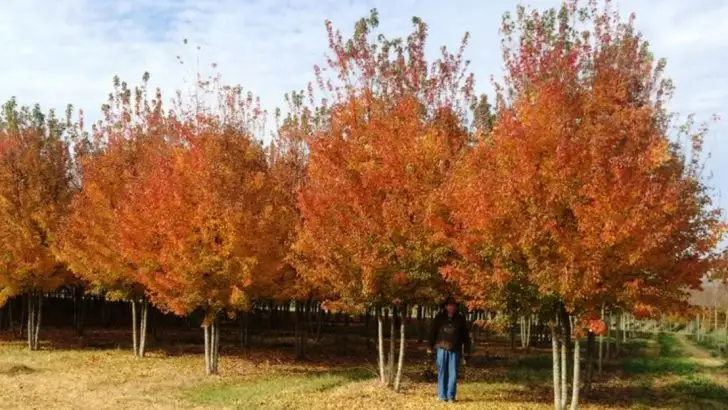Adding a maple tree to your yard can bring year-round beauty, from stunning spring blooms to vibrant autumn colors. With 21 gorgeous maple tree species to choose from, there’s a perfect option for every landscape. These trees offer not only striking foliage but also provide shade, privacy, and even syrup production.
Whether you prefer a compact variety for smaller spaces or a towering giant to create a stunning focal point, these maple species will enhance your yard with their incredible form and color. Prepare to enjoy the stunning transformations throughout the seasons with these versatile and beautiful trees.
Sugar Maple
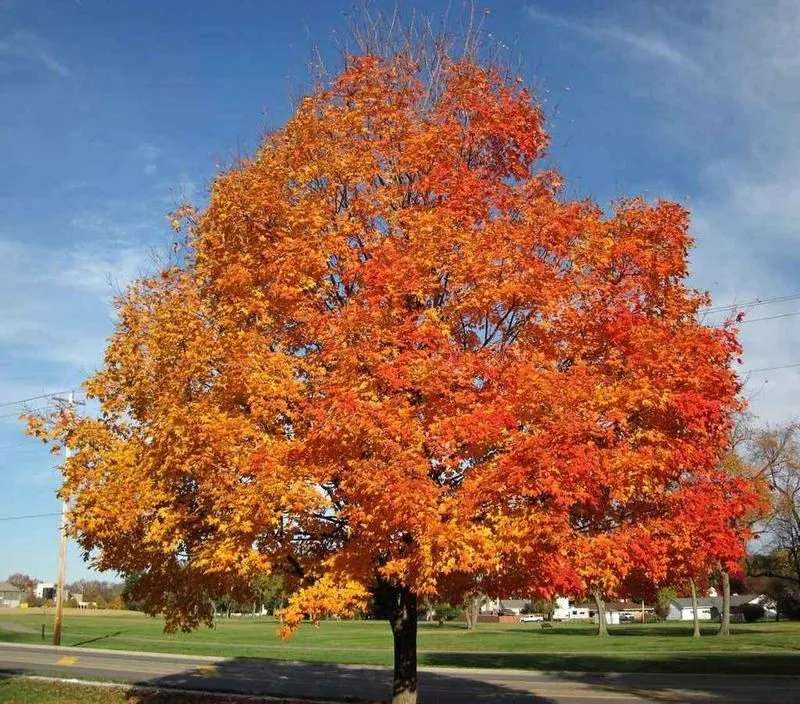
Known for its sweet sap, the Sugar Maple transforms any yard with its stunning autumn palette. Its leaves shift from bright green to warm hues of orange and red, creating a picturesque scene. The tree’s dense foliage provides excellent shade in the summer months. Ideal for large spaces, it thrives best in well-drained soil and requires minimal maintenance once established. Its strong, smooth bark adds a unique texture, complementing both traditional and modern landscapes. Consider planting a Sugar Maple if you’re looking for a hardy tree that offers both beauty and utility.
Red Maple
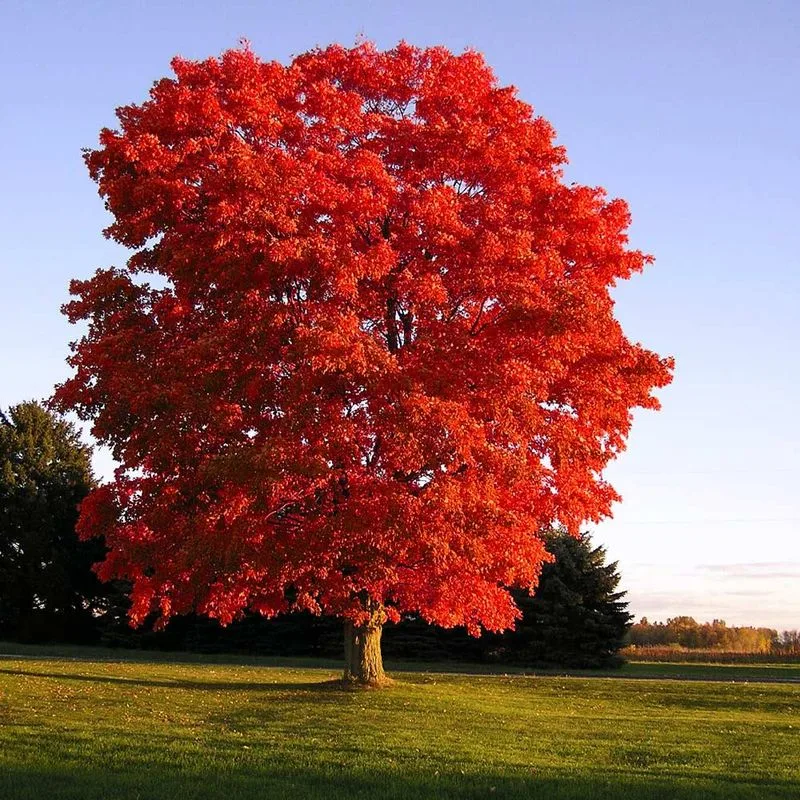
Famed for its fiery red foliage, the Red Maple is a popular choice for smaller yards. Its adaptability to different soil types makes it a versatile garden addition. In spring, look forward to small red flowers that add a hint of color before the full leaf canopy forms. The Red Maple’s rapid growth rate is perfect for homeowners seeking quick results. Ensure it receives ample sunlight to maintain vibrant leaf colors. This tree offers not just seasonal beauty, but a strong presence throughout the year.
Japanese Maple
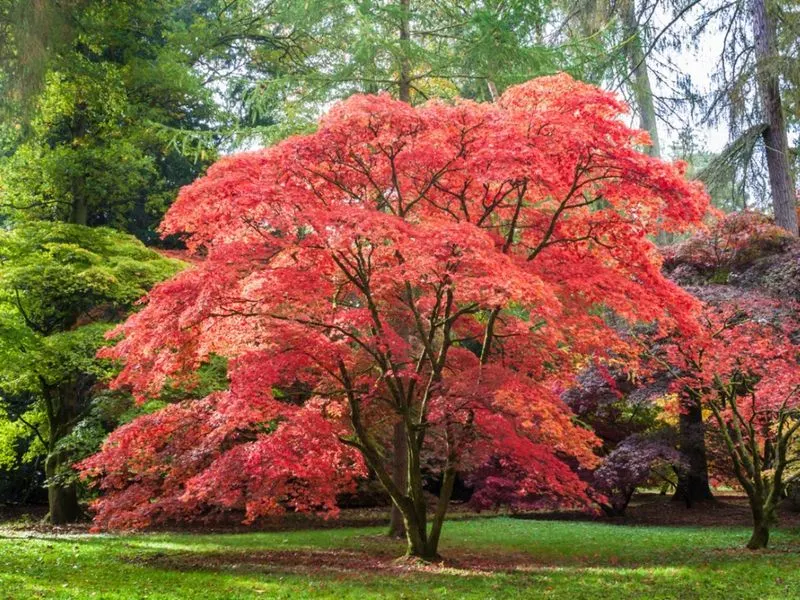
The Japanese Maple is a masterpiece of elegance and grace, perfect for adding a touch of sophistication to your yard. Its finely cut leaves and cascading branches create a gentle, calming effect, ideal for peaceful garden settings. This tree’s beauty peaks in autumn when its leaves turn a striking crimson. Although it grows slowly, its unique form makes it a hit among garden enthusiasts. Partial shade and well-drained soil are key to its success. Perfect for smaller spaces, the Japanese Maple is a showstopper.
Silver Maple
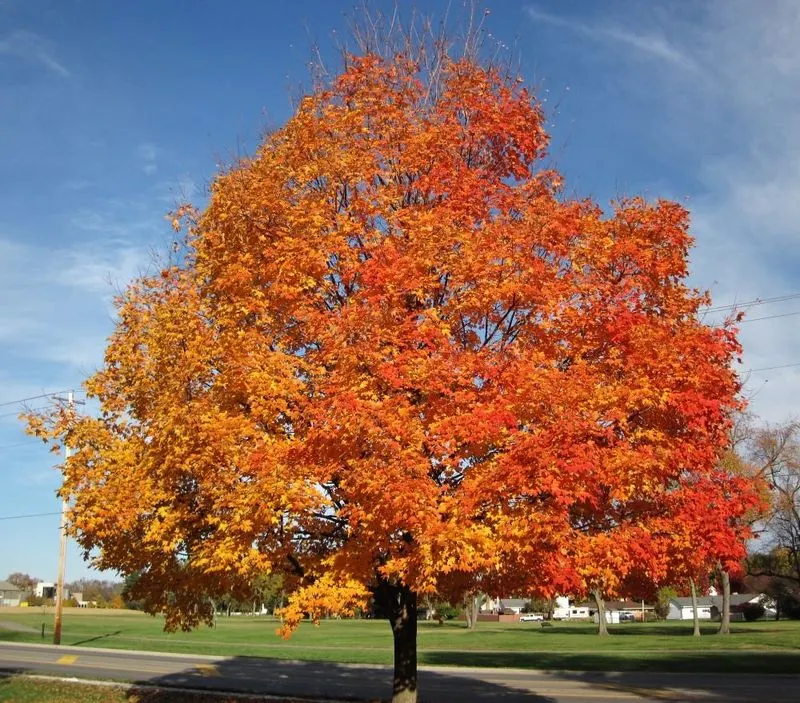
With its distinctive silvery underside, the Silver Maple adds a shimmering effect to any landscape. This fast-growing tree is perfect for those who want quick shade. It thrives in wetter conditions, making it an excellent choice for areas prone to flooding. Its wide-spreading branches provide a cooling canopy in summer. However, it requires regular pruning to maintain its shape and prevent breakage. Despite its rapid growth, it’s a resilient tree that can adapt to various soil types. It’s an ideal choice for larger properties seeking a robust, visually appealing tree.
Norway Maple

Renowned for its dense canopy, the Norway Maple offers excellent shade and privacy. Its broad leaves remain a vibrant green well into autumn, contrasting beautifully with other seasonal colors. This hardy tree can tolerate urban pollution, making it suitable for city gardens. However, it does have a high water demand, so regular watering is essential during dry spells. Its adaptability to different soils and resilience against harsh conditions make it a reliable choice. Consider the Norway Maple for its robust size and lush foliage.
Amur Maple
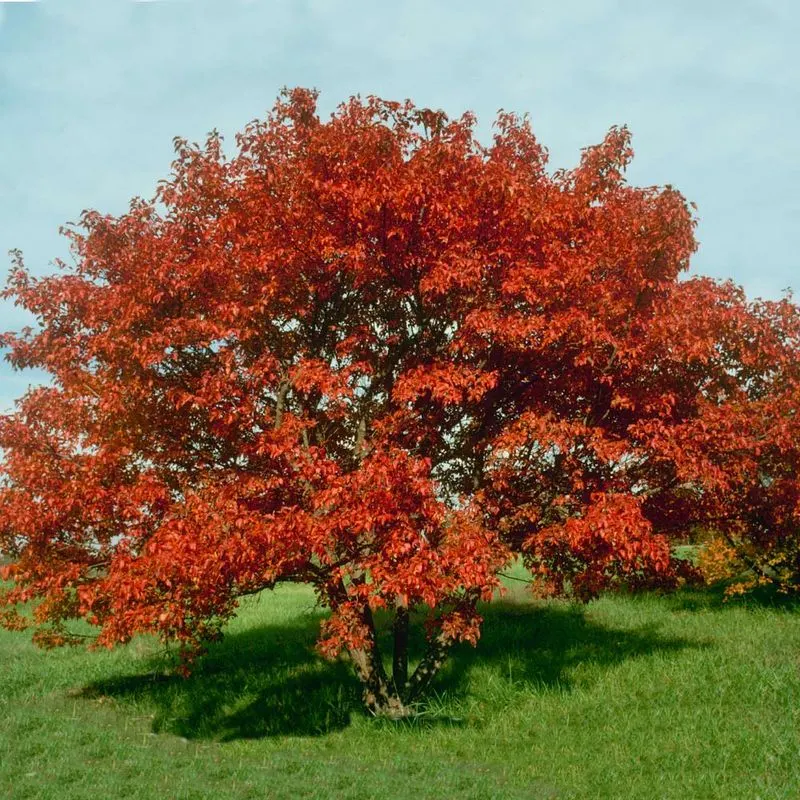
Compact yet captivating, the Amur Maple is ideal for smaller gardens. Its vibrant fall colors range from red to orange, providing a stunning display. This tree is highly adaptable, tolerating various soil types and conditions. Its small size makes it perfect for urban gardens or as a standalone focal point. The Amur Maple’s hardiness means it’s low maintenance, requiring minimal pruning once established. It also offers seasonal interest with fragrant white spring flowers. For those seeking a smaller tree with a big impact, the Amur Maple is a fantastic choice.
Paperbark Maple
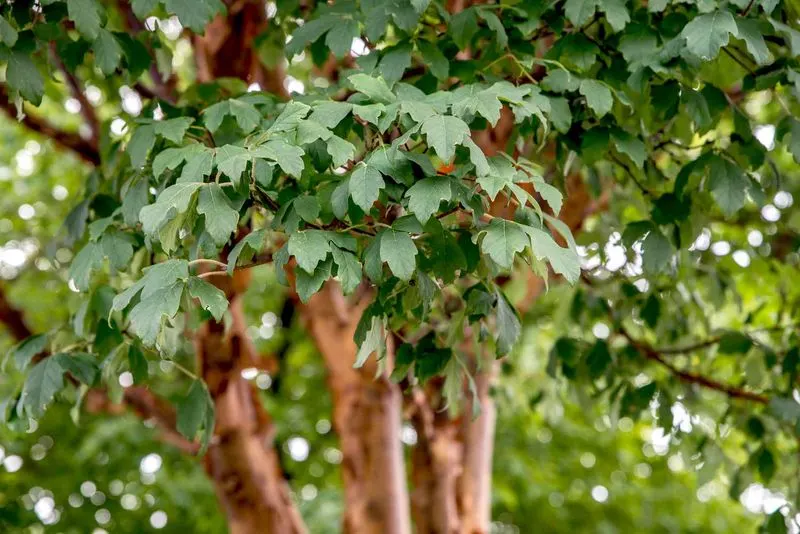
The Paperbark Maple is celebrated for its unique, cinnamon-colored peeling bark, adding visual interest throughout the year. This tree’s understated elegance makes it a wonderful addition to any garden, especially during winter when its bark stands out. Its trifoliate leaves turn a brilliant red in autumn, enhancing its appeal. Though it grows slowly, its manageable size suits smaller yards. Preferring well-drained soil, this maple offers year-round beauty with minimal care. The Paperbark Maple is perfect for those seeking an ornamental tree with distinctive features.
Box Elder
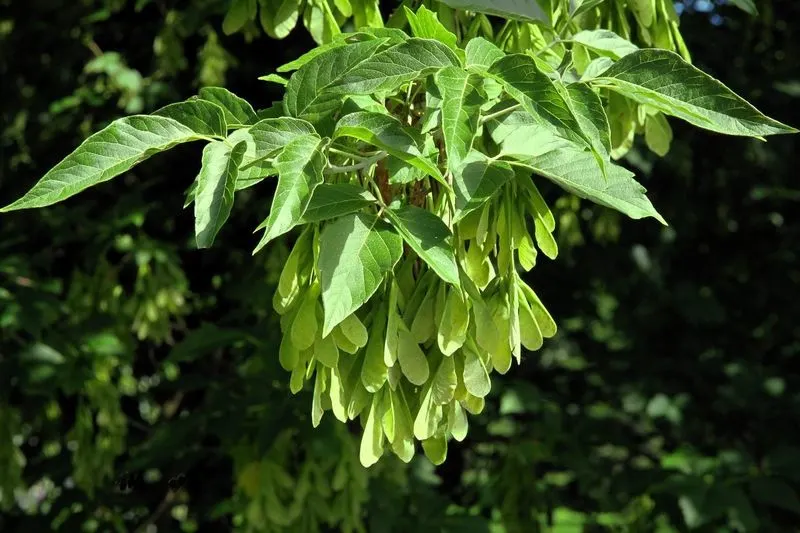
Often overlooked, the Box Elder is a versatile and resilient tree that thrives in various conditions. Its rapid growth and adaptability make it suitable for landscapes needing quick greenery. With compound leaves and a broad crown, it provides ample shade and a refreshing atmosphere. While not as showy as other maples, its yellow autumn leaves offer subtle beauty. This tree is excellent for stabilizing riverbanks and providing habitat for wildlife. The Box Elder’s ability to grow in tough environments makes it a practical and functional choice for naturalizing large areas.
Bigleaf Maple
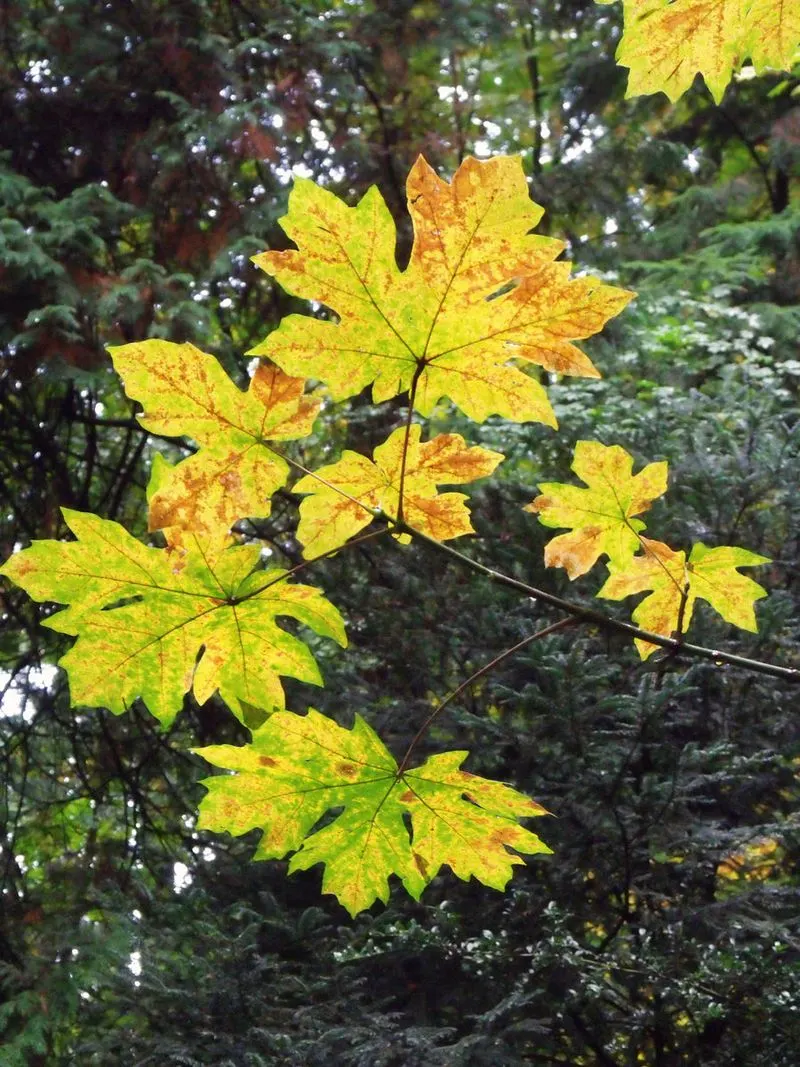
True to its name, the Bigleaf Maple boasts the largest leaves of any maple species, creating a dramatic visual impact. These leaves, which can reach up to a foot across, turn golden yellow in the fall, offering a spectacular seasonal show. Its robust and fast-growing nature makes it ideal for large spaces. This tree thrives best in moist, well-drained soils and can become a majestic focal point in woodland settings. The Bigleaf Maple is perfect for those wanting to attract wildlife, as its sap and seeds are favored by many species.
Vine Maple
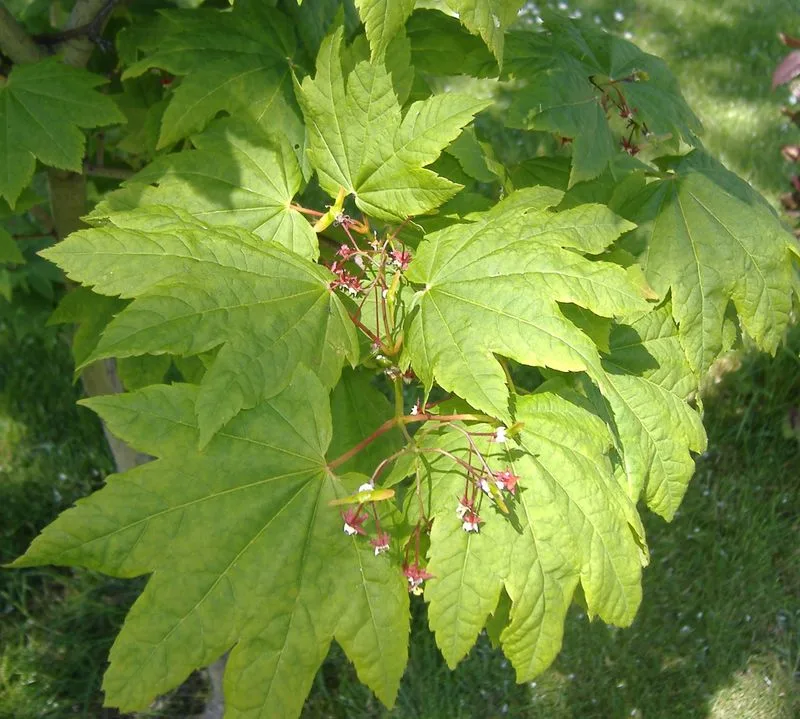
Known for its graceful, arching branches, the Vine Maple is a favorite for naturalistic landscapes. Its leaves transition from green to a medley of yellow, orange, and red in autumn. This multi-stemmed shrub or small tree thrives in shady conditions, making it suitable for woodland gardens. Its adaptable nature allows it to grow in various soil types, though it prefers moist, well-drained locations. The Vine Maple’s delicate structure and vivid fall colors make it a beautiful addition to any garden. It’s particularly effective in creating layered visual interest.
Mountain Maple
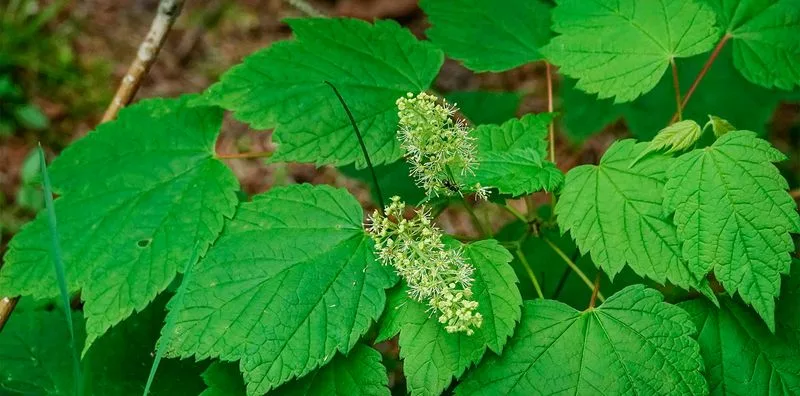
The Mountain Maple is well-suited for cooler climates and higher elevations. This small tree or large shrub is known for its resilience and ability to thrive in rocky, challenging terrains. Its light green leaves and young pinkish twigs add subtle beauty to rugged landscapes. In the fall, leaves turn a gentle yellow, offering a serene contrast to the surrounding environment. This maple is perfect for naturalizing areas or as part of a mixed border. The Mountain Maple’s hardiness and adaptability make it a valuable addition to diverse ecosystems.
Striped Maple

Easily recognizable by its unique bark, the Striped Maple features vertical green and white stripes that add visual intrigue. Its large, three-lobed leaves provide a lush, green backdrop in the summer, turning yellow in the fall. This understory tree prefers shaded areas and moist, well-drained soil, making it a great choice for woodland gardens. Its moderate size and distinctive appearance bring character to any landscape. The Striped Maple’s ability to thrive in low-light conditions makes it ideal for adding depth to shaded areas.
Manitoba Maple

Also known as the Box Elder, the Manitoba Maple is distinguished by its broad, spreading shape and pinnate leaves. Its fast growth and adaptability to various soils make it a popular choice for open landscapes. While not as visually striking as other maples, its usefulness for creating shade and windbreaks is unmatched. This tree is particularly suited for prairie areas, where it can stabilize soil and provide habitat for local wildlife. The Manitoba Maple’s resilience and practical benefits make it a valuable asset for large, open spaces.
Freeman Maple
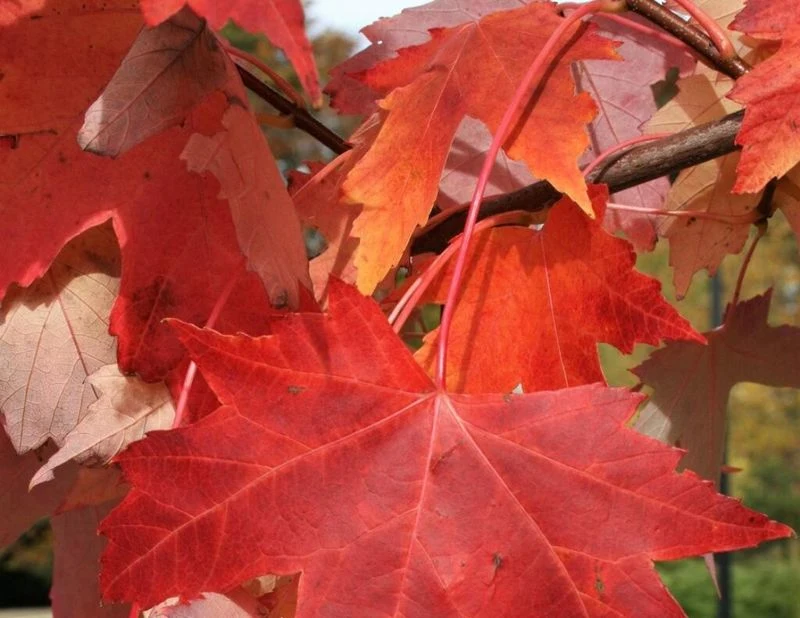
A hybrid between the Red and Silver Maple, the Freeman Maple combines the best traits of both parents. It offers rapid growth, strong branch structure, and vibrant fall color, making it a popular choice for urban and suburban settings. This tree’s adaptability to different soil types and tolerance of pollution make it ideal for city environments. Plant it in a spot with full sun to ensure the brightest leaf colors. The Freeman Maple is perfect for those seeking a hardy, visually appealing tree with minimal maintenance requirements.
Hedge Maple
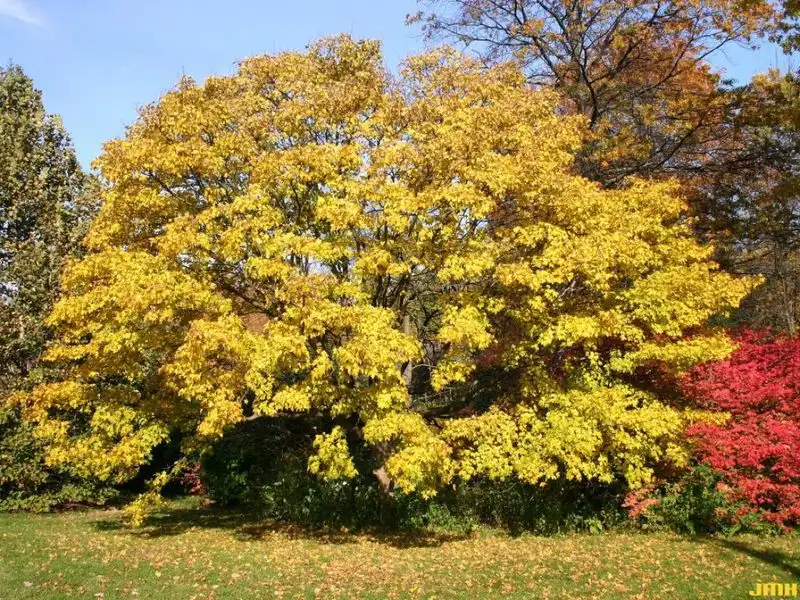
Compact and versatile, the Hedge Maple is perfect for creating living fences or hedges. Its dense foliage and tolerance of heavy pruning make it ideal for shaping into desired forms. This small tree thrives in urban environments, withstanding pollution and compacted soils. Its leaves turn a warm yellow in autumn, adding seasonal interest. The Hedge Maple’s adaptability and low maintenance needs make it a practical choice for gardeners seeking structure and privacy. It’s especially effective in formal gardens, where its neat appearance adds a touch of elegance.
Black Maple
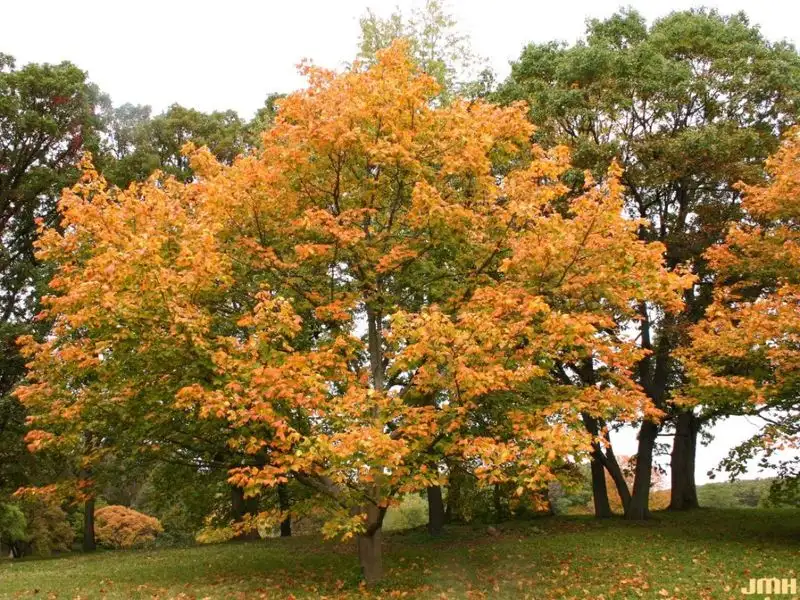
Often confused with the Sugar Maple, the Black Maple features darker, more leathery leaves that provide a rich green canopy. This tree is well-suited to moist, fertile soils and tolerates shade, making it ideal for woodland settings. Its stunning golden-yellow fall foliage rivals that of its more famous cousin. The Black Maple’s robust nature ensures it remains a resilient choice for those seeking a dependable shade tree. Its ability to adapt to various conditions makes it a versatile addition to diverse landscapes.
Field Maple
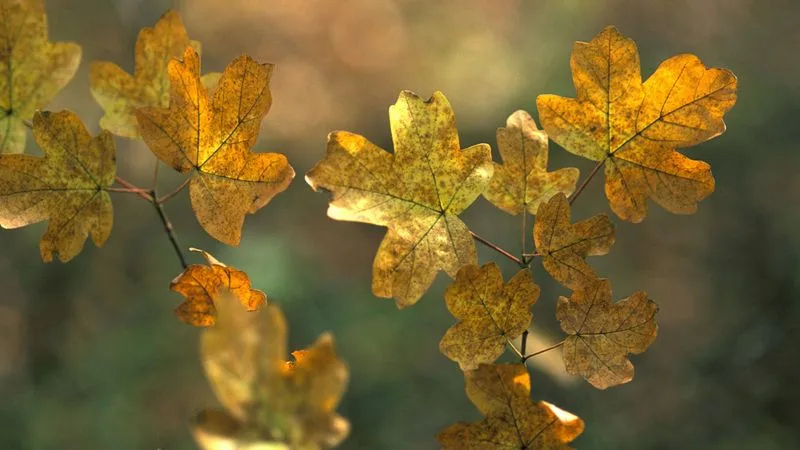
Native to Europe, the Field Maple is known for its distinctive, corky bark and small, lobed leaves. In autumn, it presents a display of golden yellow leaves that brighten any landscape. This tree’s compact size and tolerance for pollution make it suitable for urban gardens. Though smaller, it offers a dense canopy and is often used in hedgerows and as a windbreak. The Field Maple is perfect for those seeking a low-maintenance tree with historical charm and practical benefits. Its adaptability makes it a reliable choice for various settings.
Trident Maple
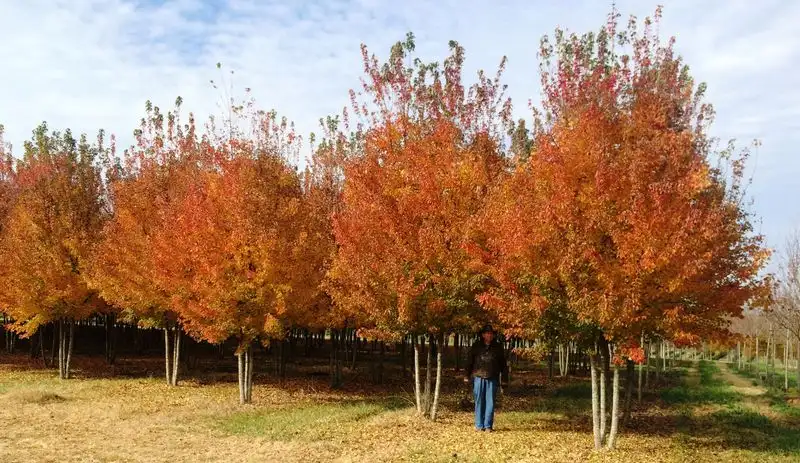
Renowned for its striking three-lobed leaves, the Trident Maple is a favorite among bonsai enthusiasts. Its compact size and rugged bark make it a standout feature in any garden. This tree thrives in full sun and well-drained soil, producing vibrant orange and red foliage in the fall. Its moderate growth rate and ability to tolerate pruning make it ideal for shaping and styling. The Trident Maple is perfect for smaller spaces or as a specimen tree, offering both beauty and versatility.
Coral Bark Maple
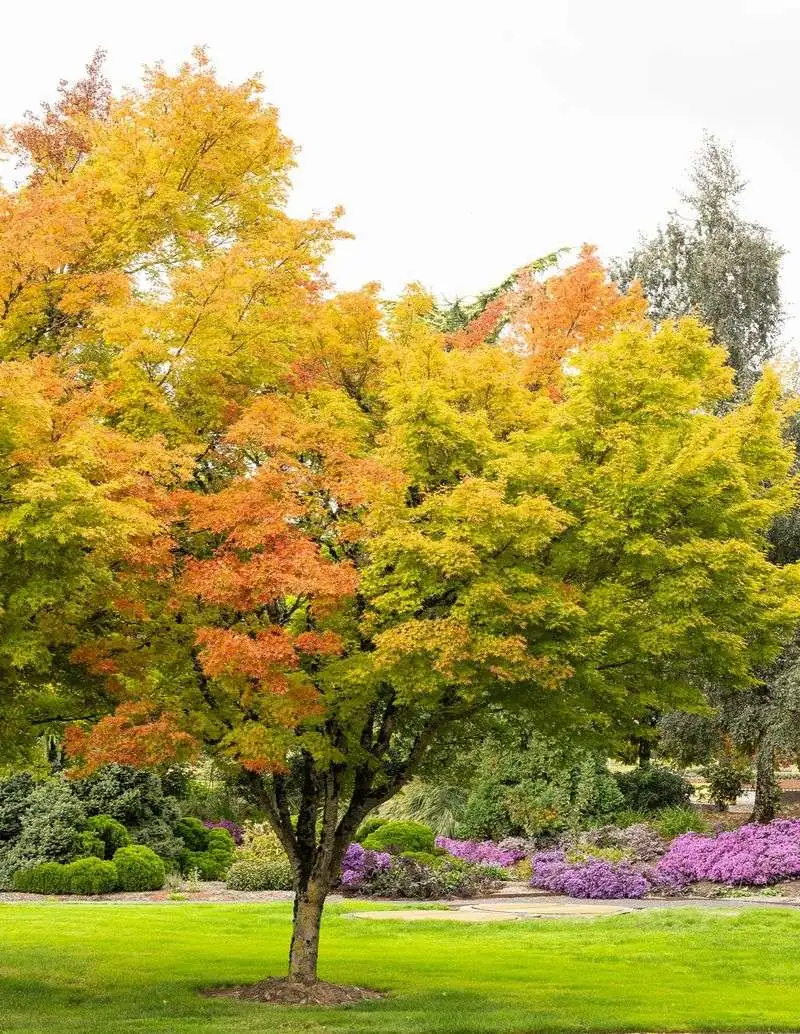
The Coral Bark Maple is an eye-catching tree, especially in winter when its bright red bark stands out against the landscape. Its delicate green leaves turn golden yellow in autumn, offering a seasonal show. This tree thrives in partial shade and moist, well-drained soil, making it ideal for small gardens. Its moderate growth and compact size ensure it fits well in most landscapes. The Coral Bark Maple is perfect for adding winter interest and vibrant color to your yard, ensuring beauty year-round.
Tatarian Maple
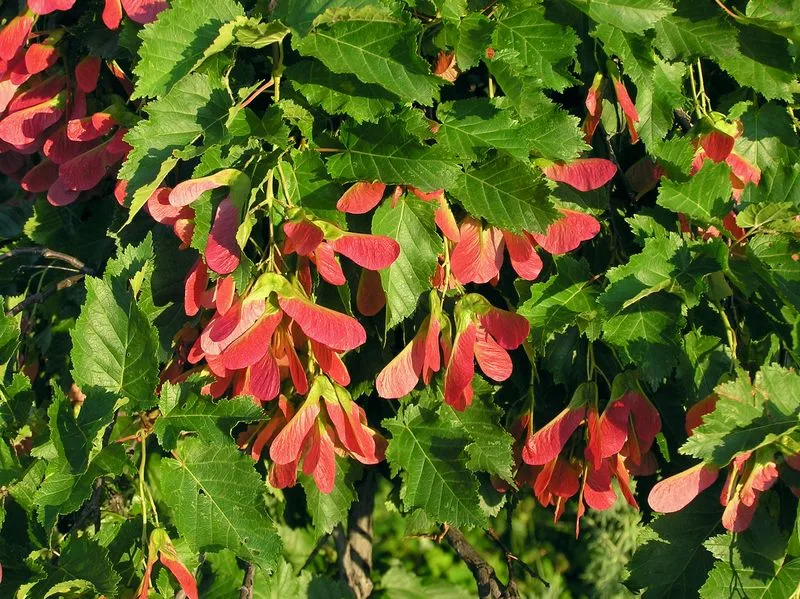
The Tatarian Maple is a resilient and adaptable tree known for its ornamental charm. In spring, it produces clusters of small yellow flowers, followed by reddish winged seeds. Its glossy green leaves turn shades of yellow and red in the fall, creating a vibrant display. This small to medium-sized tree thrives in diverse soil conditions and requires minimal maintenance. The Tatarian Maple is perfect for those seeking a beautiful yet hardy tree, suitable for urban and rural gardens alike. Its seasonal changes offer continuous visual interest.
Ghostly Glimmer Maple
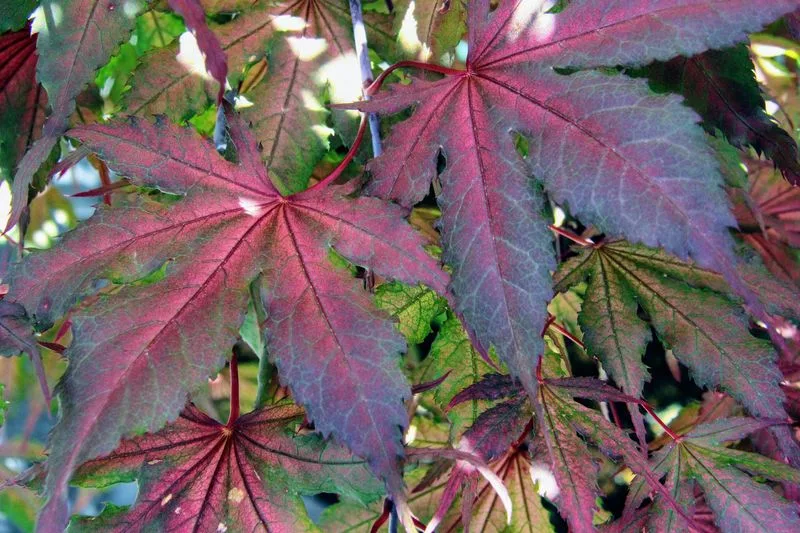
Ghostly Glimmer Maple
Imagine a maple tree that seems to shimmer in the moonlight, casting a gentle glow over your garden. The Ghostly Glimmer Maple is a rare beauty with leaves that appear almost translucent under the night sky. This ethereal species is perfect for adding a touch of magic to any outdoor space.
Standing gracefully, its delicate branches sway with every breeze, creating an enchanting dance of light and shadow. Perfect for fairy-tale enthusiasts, this tree transforms any yard into a mystical wonderland. Planting one becomes a delightful journey into a realm of whimsy and splendor.

